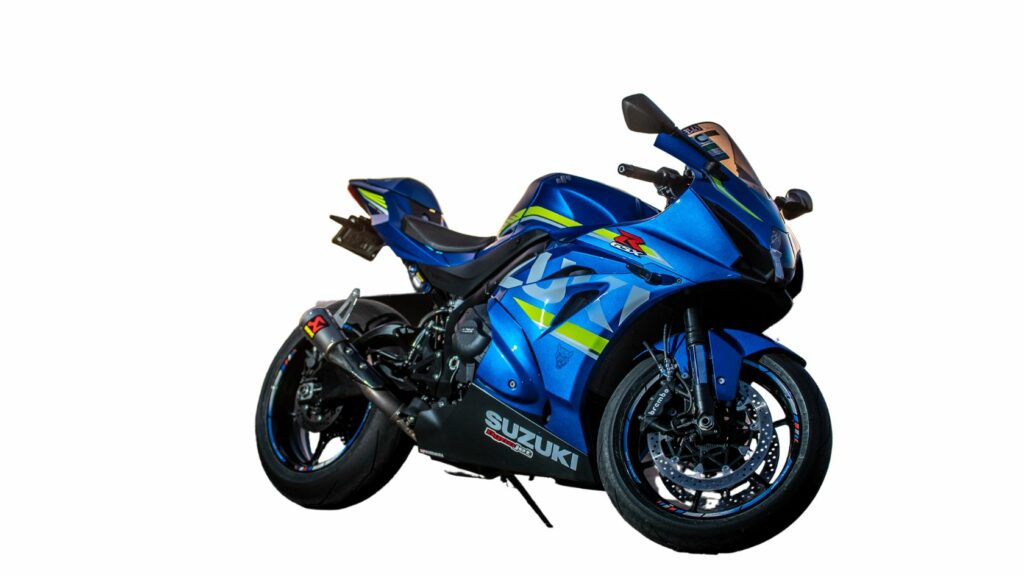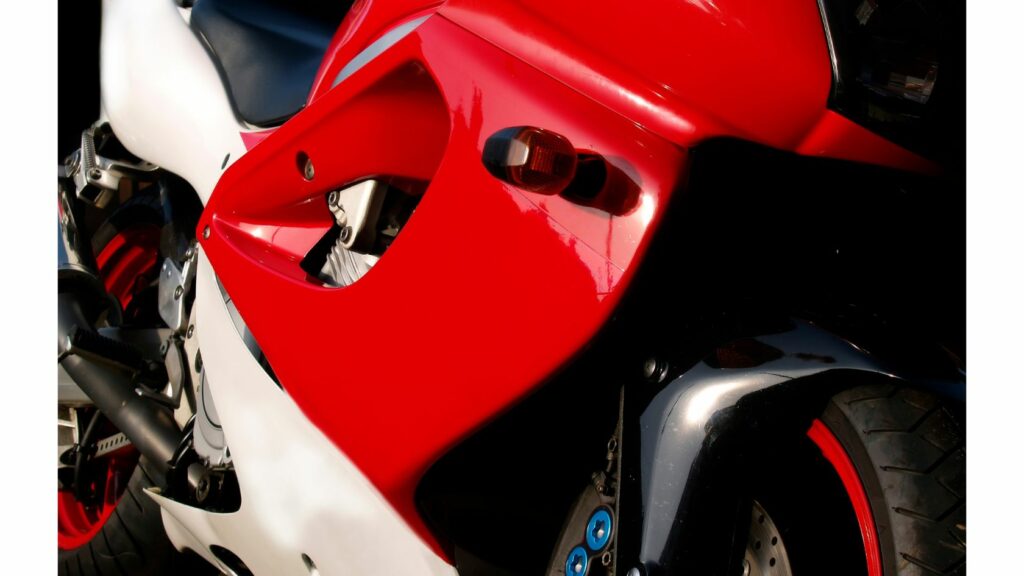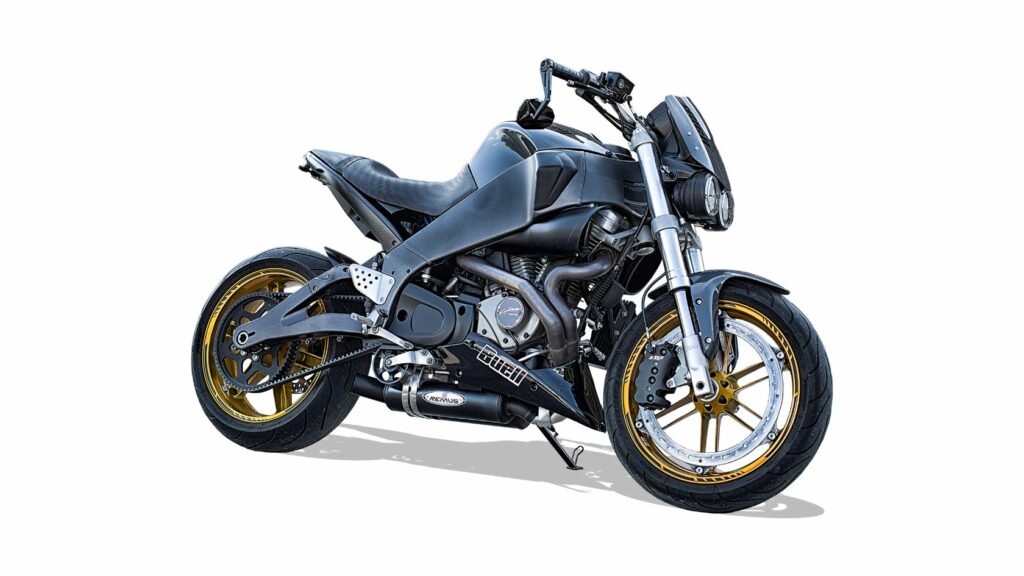
So, you’re eyeing those sleek motorcycle fairings, but a perplexing question nags at you: Why are motorcycle fairings so expensive?
Motorcycle fairings are not just mere accessories; they are a combination of engineering, design, and functionality. Beyond their stylish allure, these panels serve a higher purpose.
While the price tag might raise eyebrows, understanding the underlying factors reveals why motorcycle fairings are a valuable investment.
In this informative blog post, you will unravel the mysteries that contribute to the expense of motorcycle fairings, shedding light on both the obvious and the often-overlooked aspects.
What Are Motorcycle Fairings?
Motorcycle fairings are essentially the sleek and often colorful panels that are used to cover various components of a bike like the engine, radiator, and fuel tank.
No doubt, fairings enhance the bike’s visual appeal, but their significance goes beyond aesthetics.

First of all, fairings play a vital role in improving the aerodynamics of a bike. The unique design of fairings helps in reducing wind resistance, which, in turn, enhances fuel efficiency and stability, especially at high speeds.
Additionally, fairings provide protection to the rider from wind, debris, and adverse weather conditions, allowing for a more comfortable and safe riding experience. They also shield crucial mechanical parts from external elements, prolonging their lifespan.
So, beyond their stylish facade, fairings contribute significantly to a motorcycle’s performance, rider comfort, and overall longevity.
If you are fascinated by the visual appeal and looking to enhance your bike’s performance by using fairings then there is a drawback – its price!
How Much Do Motorcycle Fairings Cost?
Motorcycle fairing prices are not standard but vary based on factors like brand, material, design complexity, and customization options.
And not to forget the type of fairings (OEM or Aftermarket) which are also deciding factors in price consideration.
OEM (Original Equipment Manufacturer) Fairings
OEM fairings are manufactured by the motorcycle’s original maker. Since you get the same quality and aesthetics as your bike’s original components and the kit is manufactured with seamless fit and finish the price of OEM fairings is comparatively higher.
Depending on the brand, model, and specific design the prices of OEM fairings can range from $300 to $1500.
Aftermarket Fairings
Aftermarket fairings are produced by third-party manufacturers. These fairings provide more flexibility in terms of design, material, customization, and pricing.
Here you have the choice to customize the design, material, etc. to suit your budget. Generally speaking, budget-friendly aftermarket fairing kits can start around $200 and can go beyond $1200 based on the material and design choices.
Keep in mind that both OEM and aftermarket fairings may require professional installation, especially if the design is complex or custom modifications are necessary. Installation costs can range from $200 to $600 or more, depending on the expertise required.
Why Are Motorcycle Fairings So Expensive?
Regardless of their design and looks, motorcycle fairings are not something that every motorcyclist can afford to buy or install.
The pricing of motorcycle fairings largely depends on the craftsmanship, design, and functionality.
Fairings are designed to optimize the aerodynamics and performance of a bike which is often built using top-notch materials for longer durability. The designing process demands advanced manufacturing techniques, customization, and adherence to safety regulations.
The complexity of fitting and installation, along with the ongoing research, innovation, and personalization, also contribute to their overall cost.
To summarize, it takes a lot to create fairings for a particular bike. However, these pieces of plastics offer attraction, value, and protection which make them a worthwhile investment even at a higher price.
We’ll dig down further in the next section covering the factors and intricacies behind them that make fairings quite expensive.
1. The Material
Motorcycle fairings must withstand various stresses, including wind pressure, potential impacts, and exposure to the elements. This is the reason different materials are used to ensure fairings last longer and protect you from safety hazards.
The choice of materials significantly influences both fairing quality and cost, reflecting the delicate balance between strength, durability, and performance.
Some of the common materials used to manufacture motorcycle fairings are:
ABS Plastic – Made of Acrylonitrile Butadiene Styrene, this material offers a blend of strength, flexibility, and lightweight attributes but lacks durability compared to other options.
Fiberglass – Fiberglass elevates durability beyond ABS plastics. This material is known for sturdiness and ease of reparability but is heavier than their ABS counterparts.
Carbon Fiber Polymer – Carbon Fiber Polymer, made of gel-coated fiberglass is lightweight yet more powerful and durable for enhanced handling and aerodynamics. However, it’s often reserved for elite racing motorcycles to prepare racetrack fairings at a premium cost.
2. The Design
Motorcycle fairing design is a crucial factor that directly impacts the cost. The design is not about just aesthetics but also contributes to the aerodynamics of a bike.
While designing, each curve and contour of a bike is carefully calculated to reduce drag and optimize airflow. The complexity of the design process, which often includes computer-aided design (CAD) and aerodynamic testing, adds to the production cost.
Fairings can range from simple and straightforward designs to intricate patterns and graphics. The level of customization desired by riders can, therefore, fluctuate the final price.
For example, custom fairings designed to integrate with headlights, turn signals, and mirrors require careful engineering, fabrication, and more importantly seamless integration with these parts. So, prepare to spend more.

Your overall cost on motorcycle fairings may also fluctuate based on the type of fairing—full or half.
Covering a larger portion of the bike provides better wind protection and improved aerodynamics but also requires more materials, design intricacies, and a higher degree of precision during installation.
On the other hand, covering only the upper portion of the bike, tend to be less expensive due to their reduced material usage and less complex design.
3. Manufacturing Process
You have a Harley, Suzuki, or Honda, each motorcycle model has its own unique fairing design that fits its frame and complements its function.
Some manufacturers offer additional customization, allowing riders to choose colors, graphics, and additional features of their own choice.
This individualization and customization increases manufacturing complexity, as molds, templates, and production processes must be tailored for each model.
In practicality, crafting a motorcycle fairing involves sophisticated manufacturing techniques such as compressed or injection molding, vacuum forming, and composite layup for premium models.
To achieve specialized molds, skilled technicians and precision machinery are essential for producing flawless fairings. Similarly, if you opt for painted fairings the cost can rise significantly owing to meticulous preparation, priming, painting, and clear-coating.
Customized paint jobs demand additional time and expertise from another set of professionals whose charge gets added to your overall fairing cost.
4. Fitting and Installation
Proper installation of fairings is critical for safety, performance, and aesthetics. If you don’t know how to fit the fairings yourself then add a few hundred dollars extra on fitting and installation charges.
Achieving a seamless fit often demands expertise as the improper structure may result in sub-standard performance and even lead to damage in the future.
The expertise required for precise fitting and modification to the motorcycle’s frame contributes to the overall cost.
5. Research and Development
Motorcycle fairings have evolved over the years, thanks to continuous research, innovation, and development.
Reputed brands and manufacturers invest in research and development to create fairings that blend form and function seamlessly.
This research process involves wind tunnel tests, simulations, and real-world trials to optimize design and performance. Specialized engineers are assigned to conduct the research and testing.
Once successfully tested, the design must adhere to safety standards and regulations. Meeting these requirements again involves additional testing and modification to obtain proper certification.
The expenses related to R&D, prototyping, refining fairing designs, and certification contribute to the final price of the fairings which, in the end, has to be borne by the buying customer.
What Are The Disadvantages Of Motorcycle Fairings?
Apart from the buying cost, here are some of the potential drawbacks of installing fairings on your motorcycle:
- Vulnerability to Damage – Fairings can crack upon impact from debris or even minor falls, demanding careful handling.
- Low Ground Clearance – Designed for road-hugging, fairings can limit off-road usage and be vulnerable to speed bumps.
- Reduced Maneuverability – Fixed fairings can limit handlebar movement, affecting turning radius and agility.
- Weather Vulnerability – Fairings can suffer from scratches and fading in harsh conditions.
- Maintenance Complexity – Cleaning and repairing fairings can be intricate and costly.
- Air Cooling Impact – Engine air cooling can be hindered by fairings, particularly for air-cooled models.
- Weight and Performance – Added weight from fairings can alter bike handling dynamics.
- Repair Costs – Repairing or replacing fairings can be pricey and require specialized skills.
Related Read: Restoring Motorcycle Plastics
Can You Ride A Motorcycle Without Fairings?
Yes, you can ride a motorcycle without fairings. In fact, many motorcycles, particularly older models and certain types like cruisers and dirt bikes, are designed without fairings.
Riding a bike without fairings offers a more exposed and raw experience, often preferred by riders who prioritize simplicity and maneuverability.
While fairings offer aerodynamic advantages, weather protection, and style, opting for a fairing-free ride can provide more direct road connection and easier maintenance access.
It’s all about personal preference and the kind of riding experience you seek, whether it’s the classic charm of a naked bike or the enhanced features that fairings bring.
Final Thoughts
Motorcycle fairings are more than just an accessory; they’re a blend of engineering, design, and functionality. This is the reason they are not cheap.
The price tag attached to them is a reflection of the intricate processes, advanced materials, research, and craftsmanship involved which we have covered informatively in this post.
While there is no harm in riding a bike without fairings acquiring them contributes to a genuine fairing experience. These premium plastic materials facilitate streamlined wind navigation and elevate your riding aesthetics.
However, it is important to maintain their charm with proper maintenance and appropriate plastic solutions.
Ultimately, investing in high-quality motorcycle fairings is an invaluable step to set your bike apart from the ordinary.
